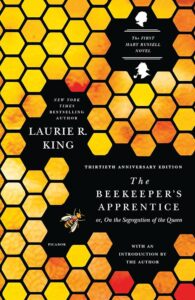Will Thomas: Season of Death
Barker & Llewelyn #16
 Season of Death is the sixteenth book in Will Thomas’ series set in Victorian London, featuring private enquiry agents (they prefer this term, rather than “detectives”) Cyrus Barker and Thomas Llewelyn. I had not read any of the previous books in the series before, and at first I wondered if I’d be lost, starting the series with the sixteenth book, but this novel was so engaging that I felt drawn in by the story and the characters right away, and now I want to go back and read the others. Thomas gives the reader enough detail about the characters and their previous cases that you don’t feel lost, but not so much as to spoil the earlier books.
Season of Death is the sixteenth book in Will Thomas’ series set in Victorian London, featuring private enquiry agents (they prefer this term, rather than “detectives”) Cyrus Barker and Thomas Llewelyn. I had not read any of the previous books in the series before, and at first I wondered if I’d be lost, starting the series with the sixteenth book, but this novel was so engaging that I felt drawn in by the story and the characters right away, and now I want to go back and read the others. Thomas gives the reader enough detail about the characters and their previous cases that you don’t feel lost, but not so much as to spoil the earlier books.


